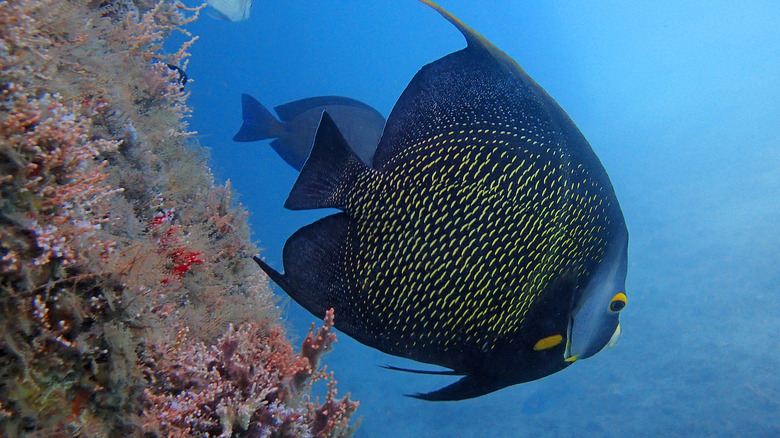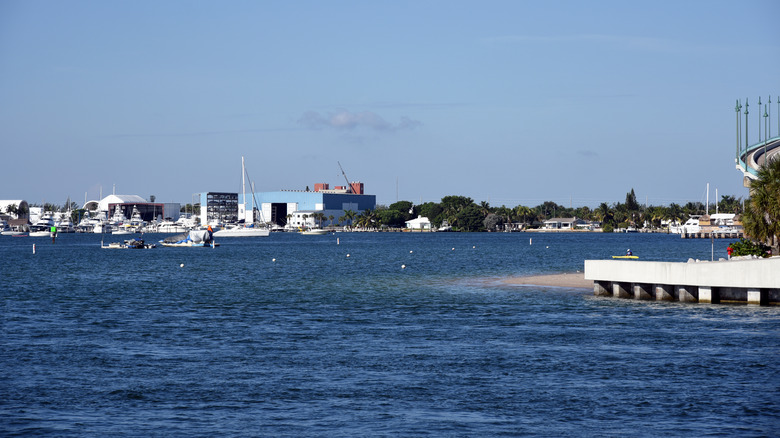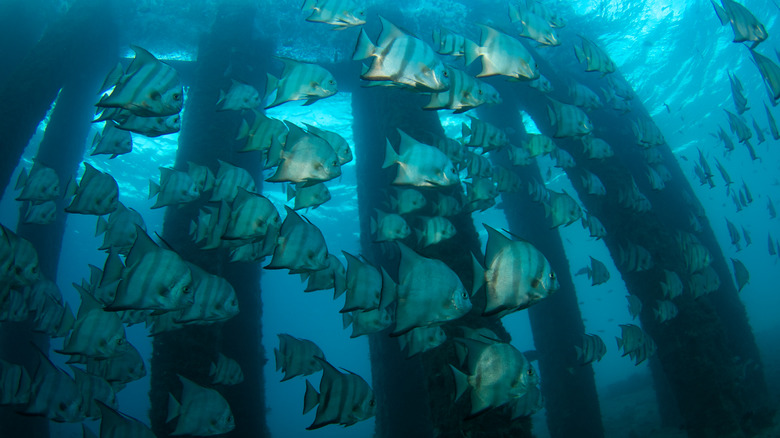For An Amazing Scuba Diving Adventure, Travel To This Magical Beach In Florida
Divers from around the world come to Riviera Beach, Florida, to visit the beloved Blue Heron Bridge, a.k.a Jerry Thomas Memorial Bridge. It has been called one of the best dive spots on the planet, and just a quick look at some of the photos taken there makes it easy to see why. A vast array of fascinating, strange, and beautiful creatures live less than 20 feet below the ocean's surface amidst abandoned shopping carts, columns, statues, and a pair of sunken ships. Because it is so shallow, this dive is immensely popular with experienced and beginner scuba divers alike.
On the ocean floor, divers can swim over a variety of ecosystems, from fields of mucky underwater plants to areas of manufactured reefs — all of which teem with life. When scuba diving (or even snorkeling) at Blue Heron Bridge, you may spot seahorses, crabs, rays, and octopi in their natural habitat. You could even encounter larger creatures moving through the area, like hawksbill turtles and manatees.
How to dive at Blue Heron Bridge
This incredible dive can be found in Phil Foster Park. This can be a very crowded spot at peak times like Saturdays in summer or holiday weekends, as tourists come from all over for the opportunity to dive at Blue Heron Bridge. If you're hoping to get a good parking spot near the beach, you'll need plenty of time before you want to be in the water. The park is generally open from 7 a.m. to 7 p.m. You'll want to plan your dive time around slack tide for visibility. If you're willing to join a group dive or hire a private guide, you may be able to go for a night excursion and see the way that the ocean comes to life after dark.
You may want to dive in three areas, all home to a wide variety of small aquatic creatures: East Bridge, the Artificial Reef and Snorkel Trail, and West Bridge. Divers must steer clear of the regular swimming area but can enter the water from the east or west or the kayak launch ramp. From there, you can explore all that Blue Heron Bridge offers. On the side closer to the fishing pier, you're likely to spot starfish and seahorses, while on the side nearer to the mainland by the sunken shipwrecks, you could see frogfish and schools of grunts.
Protecting the Blue Heron Bridge ecosystem
With Blue Heron Bridge being such a popular dive site, many have worried that the frequent visitors will damage the incredible ecosystems they are traveling to see. However, aware of how unique and beautiful Blue Heron Bridge is, The Palm Beach Diving Association worked with the local government to ensure that tourists could access the dive spots without risking the habitats there. That's where the artificial reef and snorkel trail came from. Since then, more regulations have been passed to protect the creatures who make their homes there, making it illegal to capture any animals living at Blue Heron Bridge.
Today, many divers help to keep the Blue Heron Bridge safe and healthy and maybe even leave it better than they found it. In addition to skipping sunscreen before scuba diving and taking care to move safely around the reefs, many help by cleaning up trash they spot on the beach. Monthly, you can join a group doing beach and reef cleanup through Pura Vida Divers, or you can grab a cleanup bucket from one of the stands on the beach and get to work yourself. If you're serious about protecting the environment while diving at Blue Heron Bridge, you can even take a Dive Against Debris course to learn how to clean under the waves.


